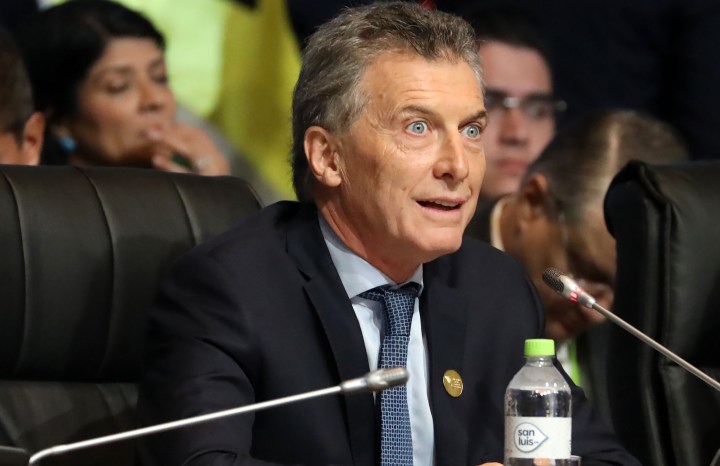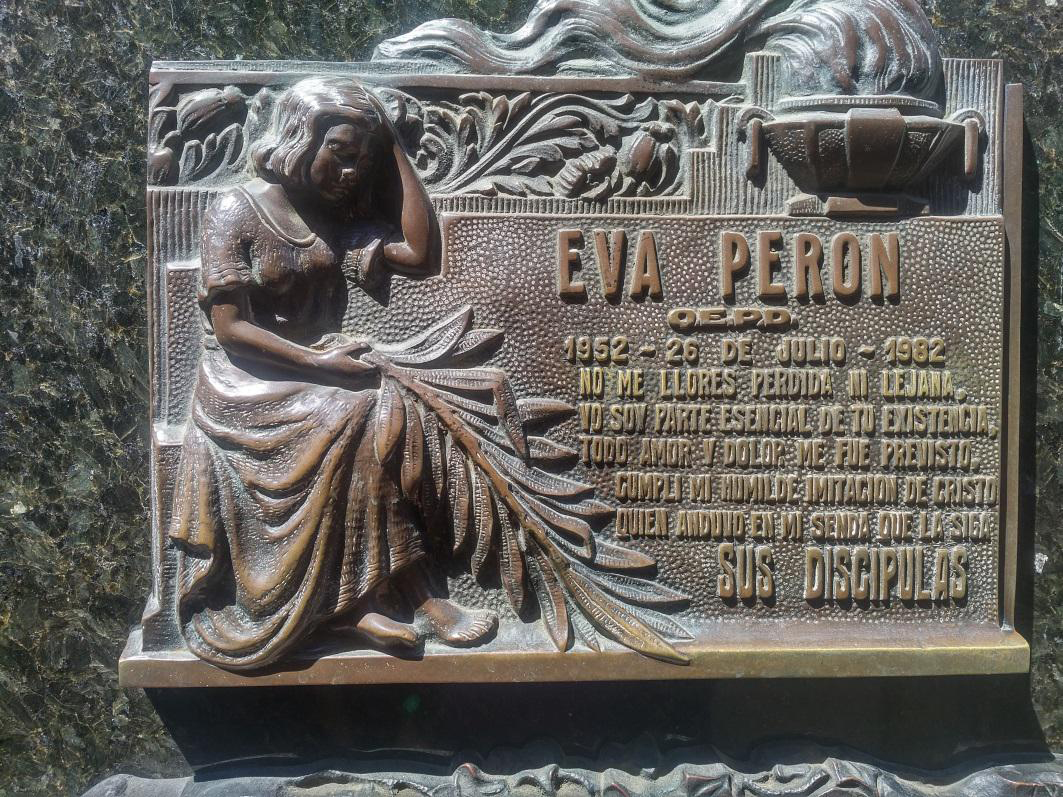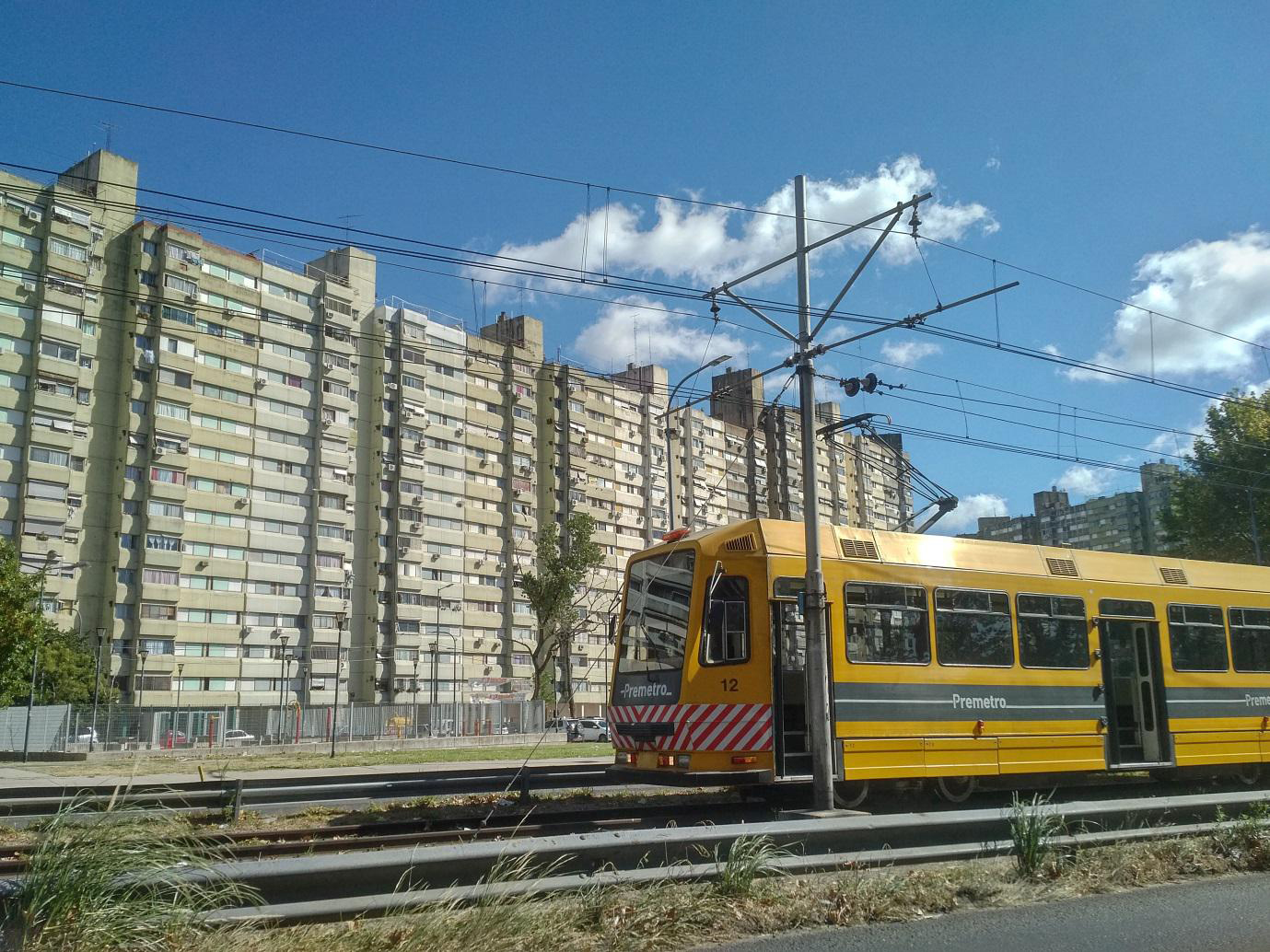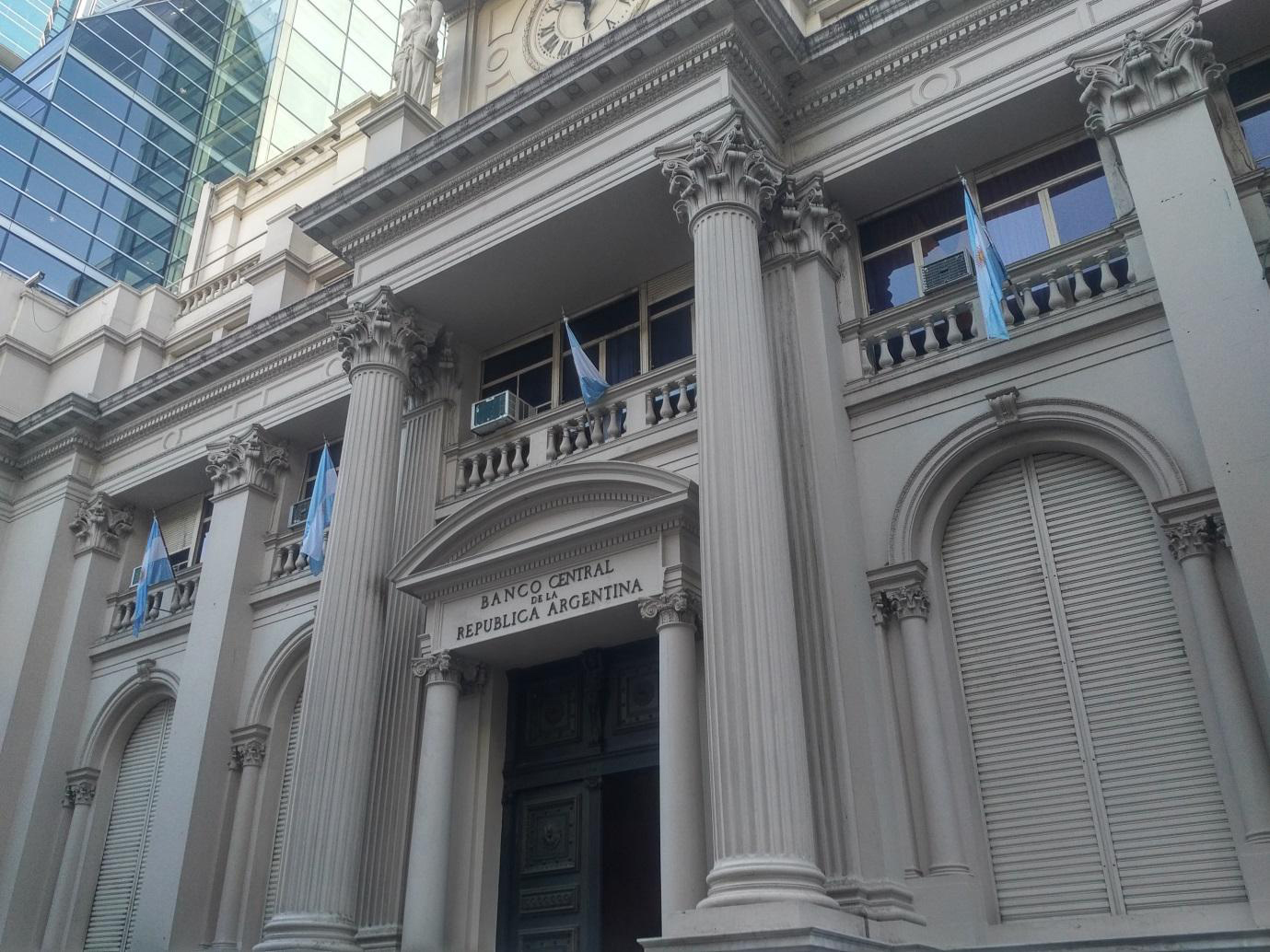OP-ED
Tough Lessons from Populism in Argentina

This month Argentina has gone cap-in-hand to the IMF for a $30-billion loan to shore up the peso, after a rise in interest rates to 40% failed to stop the markets selling off the currency. The country’s financial problems started long before the current, pro-market government of Mauricio Macri however. Argentina was once in the top-six largest economies world-wide. Since then, a combination of bad policies, big egos and a craving for control have systemically ensured macro-economic instability laced by corruption, undermining productivity, spurring inflation, weakening growth, and damaging already weak institutions. The quest for power overcomes its purpose. Put differently, in Argentina, populist politics has routinely trumped common sense economics.
La Recoleta Cemetery is perhaps best known as the final resting place of Eva Perón, the former first lady of Argentina, who died in July 1952. She had become the face of Perónism, a crusader for women’s rights and champion of the poor, the “Spiritual Leader of the Nation”.
The epitome of a national drama, today Evita is immortalised by the eponymous opera.
The cemetery sits in an upmarket Buenos Aires suburb. She rests among presidents, Nobel laureates, a grand-daughter of Napoleon, Generals, Admirals, boxer Luis Ángel Firpo, the “Wild Bull of the Pampas” who knocked Jack Dempsey through the ropes in a world title fight in 1923, who enjoys a life-size bronze statue alongside his marble tomb, along with one or two lesser known names in Argentine society, including the political scientist Guillermo O’Donnell.
O’Donnell coined the phrase Bureaucratic Authoritarianism in describing the form of Latin American military rule in the 1960s and 1970s in being based on modern technocrats and a professionalised military organisation. It is easy to forget the influence of the military in Latin America when, today, there are no juntas. But in the 1980s, eight of ten regional countries had military regimes. In Argentina, there were six successful coups between 1930 and 1976, the military ruling for around a quarter of the 20th Century before their role in politics along with their prestige, power and influence came to a sudden end with their defeat in the 1982 Malvinas war.

In memory of Eva Peron, who died in 1952. Photo by Greg Mills
The first junta, led by General José Félix Uriburu in September 1930, came in the wake of the instability of the Great Depression, which saw a 70% fall in traditional commodity prices, compounding a legacy of World War I.
Still, by the end of World War II, Argentina had enjoyed a higher rate of growth and lower inflation than the United States, ran low deficits, maintained a traditional monetary system, and possessed an institutional make-up akin to a developed country of the time.
This soon gave way however to a more populist political-economy, characterised by international isolation, state intervention, high import duties, export taxes, rent-seeking, high inflation, falling productivity including in agriculture, and the weakening of democratic institutions – tendencies which were amplified by episodic military governments. Per capita income in Argentina between 1975 and 1990, for example, fell by 1.5% per annum, while the world rate expanded at 1.6%.
The second coup, the Revolution of ‘43, signalled a change that has since shaped Argentine politics and economics whatever the regime type, civilian or military. The dictatorship ended with democratic elections in February 1946, won by Colonel Juan Perón. He continued where the junta had left off through with a “corporatist” strategy, focused on drawing the political and working classes closer together through mobilization of the unions, and adopting an import substitution industrialisation and redistributive policy.

Juan Perón, Argentina’s Hero and Villain
Although further coups followed in 1955, 1962, 1966 and 1976, interspersed with periods of civilian government, the populism of Perón perpetuated through all these regimes.
Perón observed in running Argentina that “you should indicate left, but turn right”. This lesson has been applied, however, only partly in the 44 years that Perónism has ensued after Juan’s death.
Peronist governments have habitually indicated left and turned that way, at great cost to financial and political stability.
Still Perónism has retained its stature as a “hegemonic” party.
Between 1946 and 2018 Perónist candidates have won nine of the 12 presidential elections in which they were allowed to participate, encompassing the periods of Juan and Isabelita Perón (1946-55 and 1974-76) and, more recently the husband-and-wife presidencies of Nestor and Cristina Kirchner (2003-07 and 2007-15 respectively). Additionally Presidents Hector Campora (1973), Carlos Menem (1989-99) and Eduardo Duhalde (2002-03) are all considered as Peronists, despite their varying ideological tendencies.
Not only did Perónism advocate interventionism, protectionism, and high levels of state spending, but these policies it ensured political support of the masses through subsidies and preferences. For example, to ensure his 1946 election victory, he persuaded the president to nationalise the Central Bank and extend Christmas bonuses. Such spendthrift redistribution, while politically expedient, has served repeatedly to destroy capital accumulation, while attempting baulk the inevitable reality of internal budget constraints and the underpinnings of global competitiveness.

Perónism supplied a heady mix of public goods, including mass housing, jobs through import substitution, and ego national projects from architecture to airlines – until the money ran out. Photo: Greg Mills
In the process Argentina has proven that you can do very badly despite a huge natural resource advantage in agriculture, oil and mining. And in the process these policies have served to make the poor more and not less dependent on the state. ‘Perónism,’ says the Vice Governor of Buenos Aires Province Diego Santilli, a former Senator and Perónista, “tries to understand solve social problems, but it ends up making them bigger”.
Historically this has led to a rapid accumulation of foreign debt, the growth of an unfavourable balance of payments, increasing in monetary supply, galloping inflation and a decrease in foreign reserves – all of which has ended, usually, in political tears. Regardless, such populism has been a feature of virtually every Argentine government since Perón, with the exception of those of Carlos Menem and the liberal Radical Party administration of Fernando de la Rúa.
Attempts at reform have foundered on an all-too-easy reversion to populist politics and free spending.

A history of hyperinflation and reckless fiscal management and galloping monetary supply, at the root of which is politics. Photo by Greg Mills
Take Menem’s reforms. In the year from March 1989, for example, inflation reached a staggering 11,000%. The liberal government of Raúl Alfonsin, which had taken over from the junta in 1983, had proven unable to deal with the economic meltdown which caused the outgoing president to transfer power to Menem, the winner of the 1989 election, five months earlier than scheduled.
Carlos Menem, 88 in 2018, is an intuitive not an intellectual politician, a greater observer with the common sense and charisma to realise that things needed to change and the ability to get the message across. His two-story house in the Buenos Aires suburb of Palermo is notable for the paintings of his late son, also Carlos, killed in unclear circumstances in a helicopter accident, hinting at less savoury aspects of Menem’s rule.
Despite increasing physical infirmity, Menem is as clear today as he was then about the path that Argentina needed to follow. ‘
He sees no contradiction between Perónism and these reforms or, for that matter, democracy. “It is not possible,” he states, “to have development without democracy. We have had military rulers. They are good at giving orders, but not to govern. They have been failures, in Argentina and elsewhere, such as now in Venezuela, which should be a very rich country”.
Menem’s top three actions, reflects his former finance minister Domingo Cavallo, were: “First to establish good relationships across the world. We needed a different position, which included promoting our relations with the US and Britain. Second, it is essential to create the conditions to invest and, third, to try in this regard to go against the advice of the populists.”
He singles out praise for Cavallo’s role who, in turn, says that Menem’s great strength was that “he allowed his ministers to set up their teams and departments. He never wanted to be his own minister of the economy, unlike Nestor Kirchner for example, who thought that he knew everything and did not support his ministers”.
With this authority, Cavallo was able to put into practice a plan for stability and growth that would steer Argentina onto a new growth path. The core of it was the convertibility of the peso to the US dollar but it was based on a philosophy that “the entire private sector of the economy”, in Cavallo’s words, “accept the rules of the market while the public sector accepted the rules of planning and budgeting”. Thus it included the liberalisation of trade, a reduction of public expenditure, simplification of the tax system, and international agreements to restructure the country’s burgeoning debt. The Convertibility Law created a new monetary system based on the peso in place of the austral, which was convertible to the dollar on a one-to-one basis, and which was fully backed by foreign reserves. This enabled and was boosted by widespread privatisations, and a fall in public expenditure from 25% in 1990 to 20% by 1993, and resulted in an increase in production and a fall in inflation to low single digits.
The Menem period proved but a temporary aberration from Argentina’s systemic chaos.
After Cavallo resigned as minister in July 1996, things started to unwind. Rather than allowing the peso to float, his successor retained the parity convertibility with the dollar. The reason for this was political, of course. Both Menem and his rival for the leadership of the Peronist party, Eduardo Duhalde, the Governor of Buenos Aires province, had intensified. Coupled with the Asian financial crisis and the devaluation of the Brazilian real at year later in 1999, the stage was set for a traumatic devaluation.
The Duhalde and the Kirchner adminstrations which followed the period of Menem and Fernando de la Rúa quickly reverted to statist, traditionally Perónista policies, with Cristina proving much more radical than her husband Nestor. Her Minister of the Economy, Axel Kicillof, famously asserted that it is possible to centrally manage the economy now Soviet style because of the development of technology and spreadsheets such as Microsoft Excel. This revealed a misunderstanding of the nature of market forces in his belief that the cost of production determines final prices. Yet the problem is never whether sufficient computing power is at our disposal and whether we thus have enough information; rather it is to do with the impossibility of successfully creating a centrally-planned market.
The strict monetary policy of the Menem period which had ensured stability, integration with the global economy, and growth, was quickly left behind. The pesofication of Argentina’s debt by Duhalde, and the rapid slide in its value from parity with the dollar to 4:1, reduced domestic debts to a quarter of their value but also savings, redistributing wealth from savers to debtors, impoverishing the middle class, while doing little to affect volumes of foreign debt.
The Perónistas also perfected an entrenched system of patronage and control through their relationship with the unions at a strategic level and through local level agents, or Punteras. This infected formal government departments too. Cavallo refers to the “mafias” that have run the postal services and “created a virtual parallel customs and migration service to help criminal activities”.
Martin Redrado, who served as the Kirchners’ Central Bank head, sums up the challenge faced by successive administrations: “Argentina is a country of weak institutions, where democracy is unable to work properly in terms of providing checks and balances.”
This explains why Argentina sits second (45/188 overall) behind only Chile (38th) in Latin America on the United Nations’ Human Development Index, for one, and 85/180 (with a score of 39/100) on Transparency International’s Corruption Perception Index.
“The problem with this model,” says another former finance minister Ricardo López Murphy, “is that the number of those working and producing is 2.5 times larger than those who are not” – defined, in his terms, as the civil service (which has doubled to four-million in the last 20 years), pensioners (again doubled to 10-million), students, unemployed and the youth. The proportion of public employees reached nearly 10% of the population in 2015. ‘Another way of looking at this is that eight-million Argentinians are paying for 20-million,” he says.
Whatever their policy follies, the Kirchners avoided a total economic collapse because of the natural resource boom. While Nestor’s administration had managed a fiscal surplus, this was artificially created through a moratorium on debt repayments and a bonanza in agriculture exports.
The price of soya, in particular, increased from $140 per tonne in 2000 to $600, or $450 in profit, during their term of office, outputs and efficiencies boosted by investments made in the Menem years in agriculture.
Enter Buenos Aires mayor Mauricio Macri, who was inaugurated as President of Argentina on 10 December 2015 after winning 51.34% of the vote to defeat the Peronist candidate Daniel Scioli in the first presidential run-off in Argentine history. A civil engineer and president of the Boca Juniors football club, Macri became the first democratically-elected non-Radical or Peronist president since 1916. In 2005, he created the centre-right Republican Proposal party, also known as PRO, which formed the Cambiemos (Let’s Change) political coalition.
Like Perón’s anti-Americanism and Carlos Menem’s about-turn in relations with the US and Britain, Macri has fastened onto an external dimension to his recovery strategy, in his case in leading the criticism and isolation of Nicolas Maduro’s Chávista government in Venezuela. But closer to home, he has to demonstrate his spine on reforms.
The current run on the peso makes things more difficult. But again it emphasises the legacy cost of Argentina’s earlier flouting of international financial norms, and its pursuit of fiscal follies. It thus does not change what Macri has to do if he is to enable a change in Argentina’s direction away from populism. His reforms will need to centre, as ever, on keeping inflation under control by tightening up expenditure, while simultaneously balancing the need to stimulate domestic production through government spending. He will need to open up the economy, removing subsidies, while similarly juggling the imperative to create short-term unemployment and managing the risk of angering elite interests. All of this requires shrewd political timing and management. It will also depend on his ability to change the overall political mindset and expectation of Argentinians.

Public protest is a national sport in Argentina; taking responsibility is not. Photo by Greg Mills.
As Felix Pena, the head of the ICBC Foundation in Buenos Aires, says: “To be president you have to do things that are contrary to the interests of being president, not least cutting public spending.” More of Peron’s ideological two-step left and right, it seems, is required, perhaps explaining why Macri was responsible, as Governor of Buenos Aires, for erecting a statue of Peron, the first in Buenos Aires,, on the 120th anniversary of his birth on 8 October 1895.
Argentina has not yet suffered rigged elections. There are regular changes of leadership at the polls. Even in the worst of civilian administrations there has been freedom of the press. Yet bad policies, big egos and a craving for control have systemically ensured macro-economic instability laced by corruption, undermining productivity, spurring inflation, weakening growth, and damaging already weak institutions. The quest for power overcomes its purpose. Put differently, in Argentina, populist politics has routinely trumped common sense economics.
Macri offers the opportunity to put this right, the impact of which should resonate to those countries tempted by populist impulses. The question is: Will Argentinians let him? DM
Dr Greg Mills heads the Brenthurst Foundation, and has recently been researching in Argentina. This is based on a Brenthurst Discussion Paper released this week, at www.thebrenthurstfoundation.org

















 Become an Insider
Become an Insider